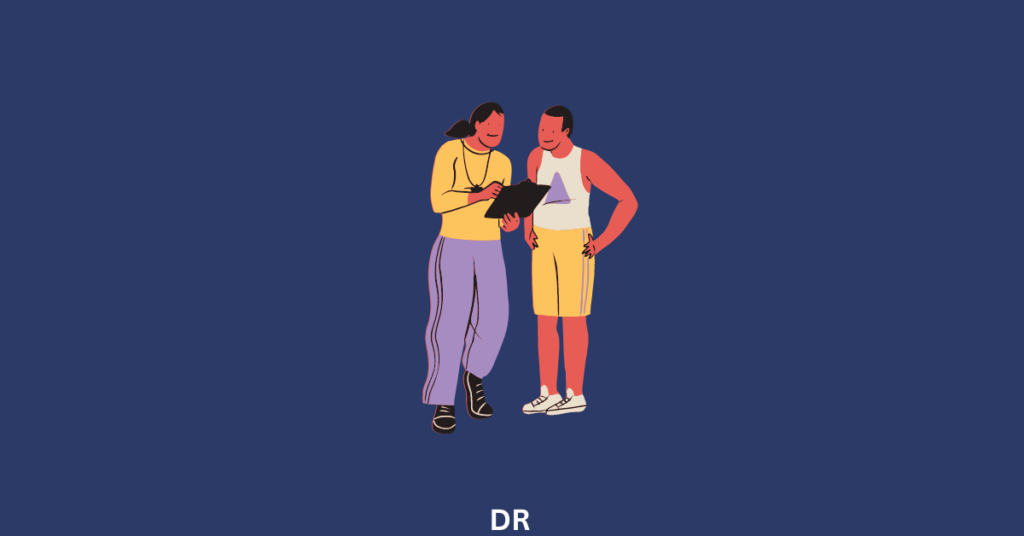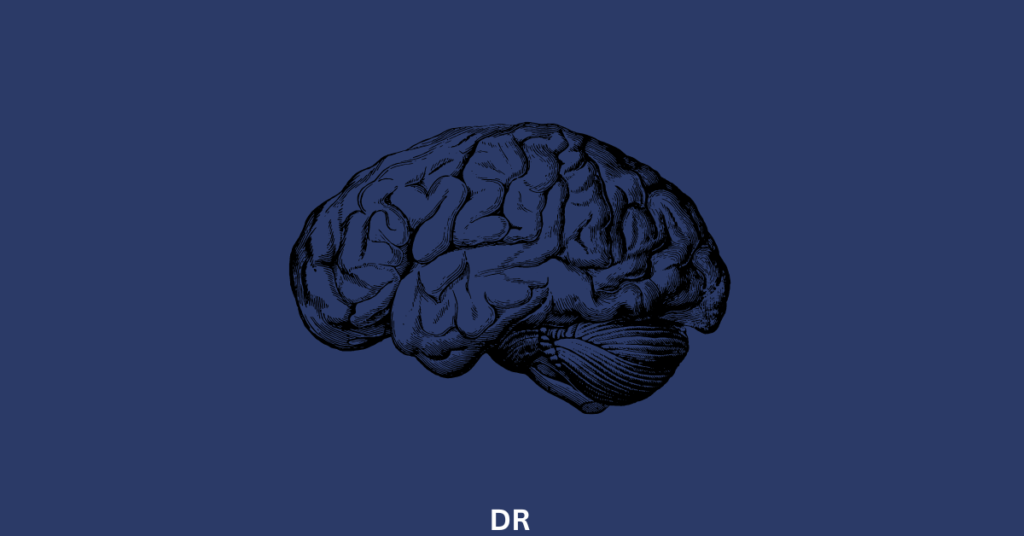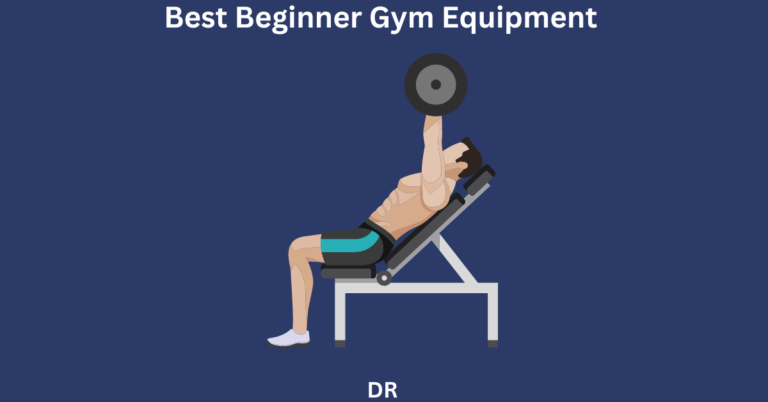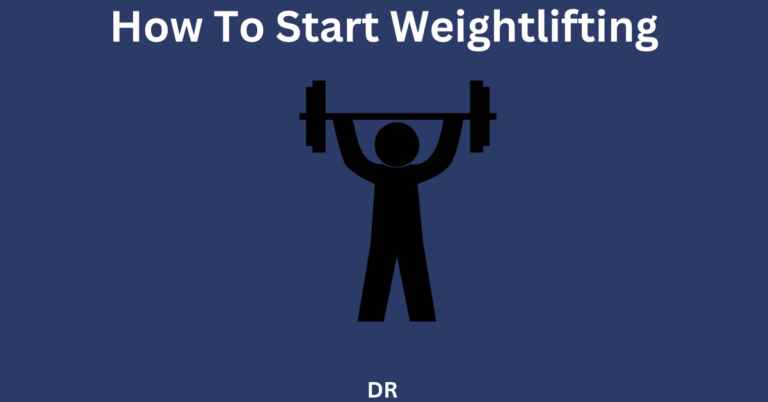Master Proper Weightlifting Form in 2024: Your Ultimate Guide to Safe and Effective Training
Did you know over 80% of gym-goers choose heavier weights over proper form1? Using bad technique can stop you from reaching your goals and increase injury risk. Let’s focus on mastering proper weightlifting form this new year.
This guide will show you how to lift weights safely and effectively. We’ll cover why correct form is important, what affects it, and how to improve your technique in various exercises. It’s for everyone, whether you’re experienced or just starting out. This guide will help you reach your goals safely and keep your body healthy.
As a beginner weightlifter, it is so important, to understand the importance of form. I made a conscious effort to always focus on my form and as someone who is been lifting weight for over 5 years now, I know how important it is for muscle growth.
Key Takeaways
- Proper weightlifting form is crucial for injury prevention and effective muscle targeting.
- Individual factors like flexibility, mobility, and injury history impact optimal form.
- Learning proper form through in-person coaching or online resources is essential.
- Progressive overload must be balanced with maintaining correct technique.
- Developing a mind-muscle connection is key for maximising the benefits of each exercise.
The Importance of Proper Weightlifting Form
Learning the right way to lift weights is key for safe and good results. One big plus of doing it right is injury prevention. Wrong form can harm your muscles, joints, and ligaments, causing injuries from small strains to big tears. Common injuries from bad form include lower back and knee problems. Doing it correctly also stops sudden blood pressure spikes, aneurysms, and heart issues from wrong breathing during lifts.
Injury Prevention
Proper form is vital for training your muscles well. With the right technique, you work the muscles you want, giving you better results faster. Keeping the right form during lifts helps avoid strains, sprains, and serious injuries. It’s important to engage your core for spine support and keep your scapula back for safe lifting.
Effectively Training Target Muscles
Getting the form right is key for long-term fitness success. It lets you increase weights safely without getting hurt. Doing exercises correctly makes your movements more powerful, lets you lift heavier, and gives you better result. It also helps you connect your mind and muscles better, leading to stronger muscle engagement and growth.
In short, good weightlifting form is essential for safe and effective training. It helps you prevent injuries, work your muscles right, and sets you up for long-term fitness success. Taking the time to learn proper form is a smart move for any lifter, no matter their skill level.
Factors Affecting Proper Form
Weightlifting isn’t the same for everyone. The right technique changes a lot based on your needs, goals, flexibility, and more. It’s key to know these differences to make a workout plan that fits you.
Individual Differences
Everyone’s body is different, affecting how they should do exercises. For example, if you can’t move your shoulders much, you might need to change how you grip the bar during a bench press. If you have longer limbs, you might need to stand or hold the bar differently for deadlifts. Knowing these differences lets you adjust your form for better workouts and less injury risk.
Injury History
Your past injuries can affect how you should lift weights. If you’ve had back or shoulder issues, you’ll need to change your lifting to avoid making things worse. This might mean changing how much you move, the weight you lift, or the exercises you do. Focusing on doing exercises right can help you avoid more injuries and reach your fitness goals.
Understanding your own needs and limitations is the first step to good weightlifting form. By looking at these factors, you can make a workout plan that suits you. This way, you can lift safely, effectively, and with confidence.
Weightlifting Form for Common Exercises
Learning the right weightlifting form is key to reaching your fitness goals safely and well. Each exercise has its own set of guidelines, but the best form can differ from person to person. Even experienced lifters can make mistakes, not just beginners. Beginners should start with 10-15 reps of proper form before lifting more weight.
The squat is done by pushing the glutes back, keeping the weight on the heels, and making sure knees and hips are in line. It’s important to engage the core and keep the shoulders down for pulling exercises like the lat pulldown. Flaring the elbows in exercises like the bench press can harm the shoulder joint. Arching the back in movements like the shoulder press can cause back injuries.
Rowing movements should see the shoulder blades glide inward and avoid ribcage flare. Squats work the thighs, glutes, and calf muscles. Deadlifts target the thighs, hips, and back muscles.
The lat pulldown works the latissimus dorsi muscle in the back, with grip affecting results. The chest press focuses on the chest and triceps, with a focus on proper form and muscle engagement.
Knowing the right form for common weightlifting exercises is vital for safe and effective fitness goals. Weightlifting has been in the Olympic Games since 1896, with events like the snatch and clean and jerk. The International Weightlifting Federation governs it, while the International Powerlifting Federation oversees powerlifting. Weightlifting started in the Paralympic Games in 1964 and is now known as Para powerlifting. A study found most injuries happen in the back, knees, and shoulders8.
Learning Proper Form
Learning the right way to lift weights is key for safe and effective workouts. Trying it out on your own can work, but getting help from experts can speed up the learning and prevent bad habits. Getting advice from a personal trainer or using online videos can give you great tips and help you get the moves right.
In-Person Coaching

Having a skilled personal trainer can really help you learn how to lift weights correctly. They can teach you one-on-one, watch how you move, and fix any mistakes right away. This ensures you’re using the right muscles and lifting safely. They can also make a workout plan that fits your goals and keeps safety first.
Online Video Resources
Along with in-person training, there are many online tools that can help you learn and check your lifting form. You can watch videos and use apps to track your form easily, improving your skills whenever you like. But remember, it’s important not to just follow videos, as everyone’s form can be different and might need a personal touch.
It’s important to be patient, keep trying, and listen to advice. Getting good at lifting takes time and effort, but it’s worth it for avoiding injuries, building muscles, and making your workouts more efficient.
Progressive Overload and Form
As a weightlifter, I know how key progressive overload is for strength and muscle growth. But, it’s vital to keep proper form in mind. Just adding more weight without thinking about technique can lead to bad habits and injuries.
It’s better to focus on increasing the tension on the muscles, not just the total weight lifted. Sometimes, you might need to lower the load to focus on form. Using lifting belts, shoes, and resistance bands can help with muscle activation and keeping joints in the right place.
- Try to increase time, weight, or intensity by 10% each week for a progressive overload plan.
- Warming up well before each workout and focusing on quality over quantity can help prevent injuries.
- Doing more reps over time can help build endurance in strength training.
- Slowly increase the weight you lift, like in a bench press, to build strength.
- Adding intervals to increase intensity, like running faster in succession, can improve fitness in cardio.
- Increasing the challenge of workouts can be done by making exercises harder or faster, or taking shorter rests.
- Keeping proper form is key when you’re making workouts harder to avoid injuries.
- Customising workout plans to fit your goals and fitness level is important for effective progressive overload.
- Listening to your body and adjusting workouts based on how you feel is key for safe and effective training.
| Progressive Overload Technique | Potential Benefits |
|---|---|
| Increasing Weight |
|
| Increasing Reps |
|
| Increasing Sets |
|
| Adjusting Tempo |
|
Using these progressive overload methods, I can keep challenging my body and growing muscle safely. I won’t compromise my form or risk injury.
Analysing Your Form
Checking your weightlifting form often is key to spotting and fixing technical problems. Use self-checks and look at videos from experts. Focus on your technique with each rep to find areas to improve, like how you stand, move, and use your muscles.
Self-Evaluation: Refining Your Technique
Checking yourself is a good way to see how you’re doing. Watch how your body is placed, how smoothly you move, and which muscles you’re using. This helps you see where you might be going wrong. Then, you can change your technique to get better and avoid getting hurt.
Form Check Videos: Obtaining Valuable Feedback
Looking at videos from pros can also help a lot. These videos let you see how you stack up against experts. You’ll see where you need to improve. Plus, advice from experienced people can really help you get your form right and see better results.
It’s also smart to think about the differences between machines and free weights. Machines can hide form problems by making movements easier and more stable. Seeing how you do on machines and free weights can show you where to focus on getting better.
| Metric | Bench Press | Squat | Deadlift |
|---|---|---|---|
| Primary Muscle Groups Targeted | Chest, Triceps | Quadriceps, Glutes | Posterior Chain (Hamstrings, Glutes, Back) |
| Percentage of Individuals Lifting Incorrectly | 45% | 30% | 35% |
| Common Injury Types | Torn Pec Muscles | Lower Back Strain | Herniated Disc |
| Recommended Equipment | Wrist Wraps, Flat Shoes | Weightlifting Shoes, Knee Sleeves | Lifting Belts, Chalk |
By checking your form with self-evaluation and videos, you can spot and fix technical issues. This leads to safer and more effective workouts. Keeping an eye on your training metrics like Fatigue, Fitness, and Form also helps you see how you’re doing and when you’re ready to perform your best.
The Mind-Muscle Connection

Having a strong mind-muscle connection is key for good weightlifting form. By focusing on the muscles you’re targeting, you make sure they work, not just your momentum or other muscles. Also, paying attention to your breathing and core helps keep your body stable and precise in each lift.
Studies show a strong mind-muscle link boosts muscle activity and leads to better results in weight training. This link makes muscle activation more efficient, making workouts more effective and increasing strength. The benefits include better muscle activation, improved performance, fewer injuries, and balanced muscle growth16.
To build this connection, try visualising your movements, slow down your reps, use lighter weights, and do exercises on one side. Keep focused by avoiding distractions, breathing consciously, trying new exercises, and improving your technique. Using tools like Barbell Jack can also help by making your workouts safer and more effective, focusing on specific muscles and improving your deadlift technique.
But remember, the mind-muscle connection’s impact drops off between 50%-80% of your 1-rep max. Men doing resistance training saw a 22% increase in chest muscle activity when focusing on their chest during bench-press at 50% 1-rep max. This shows the mind-muscle connection is great for those wanting muscle growth, like bodybuilders and weightlifters.
| Measure | Increase |
|---|---|
| Pectoralis activity during push-ups | 9% |
| Elbow flexors and quadriceps thickness (internally focused participants) | 12.4% |
| Elbow flexors and quadriceps thickness (externally focused participants) | 6.9% |
“Establishing a strong mind-muscle connection can optimise muscle activation, leading to more efficient workouts and increased strength gains.”16
Weightlifting Form and Exercise Selection
The type of weightlifting exercise you choose is key to proper form. Compound exercises work many joints and muscles and need careful technique. Isolation exercises focus on one muscle group and have their own form cues.
Knowing how to do different weightlifting exercises is vital for a good workout plan. Exercises like squats, deadlifts, and bench press have specific forms to follow. Isolation lifts help target specific muscles, like bicep curls and tricep extensions.
Beginners can start with light weights, moving to medium and heavy as they get stronger. Advanced lifters might begin with heavier weights for different muscle groups.
- Personal fitness background affects strength levels.
- Use lighter weights for upper body and heavier for lower body.
- Check if weights are right by struggling a bit in the last set.
Mastering bodyweight exercises before moving to dumbbells helps avoid injuries and keeps technique right18. Getting advice from a fitness trainer is key for learning compound movements.
“Whole Intent, a fitness service, is mentioned as having an experienced fitness trainer specialising in weightlifting instruction.”17
Common Form Mistakes to Avoid
As a fitness enthusiast, I know how vital it is to keep proper form when lifting weights. Wrong technique can slow down your progress and raise the chance of getting hurt. Let’s look at some common mistakes to avoid in 2024.
One big mistake is arching your back during overhead presses. This can cause lower back pain and make the exercise less effective. Not squatting low enough is another issue, putting stress on the knees and missing out on muscle engagement.
Trying to row without using your shoulder blades can reduce back activation and increase shoulder pain risk. Also, bad pull-up posture, like straining the neck, can mess up the movement and lead to neck pain.
Another mistake is using arms over hips in kettlebell swings. This can harm the elbows and lessen the exercise’s benefits. Similarly, using legs too much in bench press can reduce chest activation and cause imbalances.
Lastly, pointing elbows out too wide in bench press can strain the shoulder joints and lessen the movement’s effectiveness. Paying attention to these common mistakes and adjusting can help you lift safely and effectively.
Fixing these form issues and using correct technique can lower injury risk and boost the benefits of your weightlifting. Remember, sticking to it and paying attention to details are crucial for reaching your fitness goals in the coming year.
Conclusion
Learning the right way to lift weights is key to a safe and successful fitness journey. It’s important to know how good technique helps and what mistakes to avoid. This knowledge lays a solid base for success in the gym, no matter my experience level.
With the right coaching and mindset, I can improve my weightlifting and reach new fitness levels in 2024 and later. Good form boosts my performance and lowers injury risks. It also makes sure I work the muscles I want to. Using the right gear, like belts and shoes, helps with stability and better form.
By focusing on key weightlifting skills, I can get the most out of my workouts. Adding warm-ups, cool-downs, and recovery helps my joints and muscles. This leads to better result. With a focus on the mind-muscle link and always improving, I’m set to meet my fitness goals safely and effectively in 2024.





